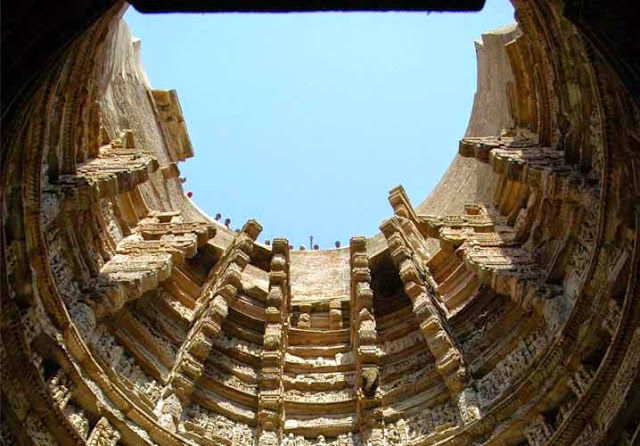This is the entrance to the grand Brihadeeswara temple in
Thanjavur. The temple is a part of the ‘Great Living Chola Temples’ declared by UNESCO as a World Heritage Site.
In
the photo you can see the upper half of the Gopuram, a pyramidical structure
which marks the gateway to the temple. Right on top, in the centre, is the face of the Kirtimukha, the demon who ate his own body (until only the face
remained) at the command of Shiva and was blessed that he would always
be placed at all Shiva temples. In this small section of the gopuram,
you can see at least 14 Kirtimukhas.
As the story
goes, Shiva, one of the main Hindu Gods, was confronted by a demon named
Rahu. Rahu had been sent by the giant-king Jalandhara to abduct Shiva’s
bride Parvati. When Shiva realized this, infamous his anger knows no
bounds. His furrowed brow gave birth to a strange creature with glowing,
bulbous eyes and the face of a lion. Shiva then ordered this creature
to devour the demon Rahu. With nowhere to flee, Rahu himself bowed down
before Shiva and began to beg for forgiveness. Shiva took pity on Rahu,
and asked his lion-faced creature to desist. At this the ravenous
creature protested, saying “But I am hungry! Now what am I supposed to
do?”
Shiva then instructed the creature to eat its own
limbs, which he did. The creature did not stop at his limbs, but kept
eating his whole body, until only his face remained. At this point Shiva
realizes that the creature was one of his greatest creations, and thus
named him Kirtimukha where ‘mukh’ means face and ‘kirti’ means glory.
Shiva apparently promised him that he would find a place in every one of
Shiva’s temples, thus living up to its given name.
 |
| Despite regional variation in other features, the Kirtimukha always has bulbous eyes. |
The Kirtimukha is often considered symbolic of the
destructive powers of Shiva Mahabhairav ( An avatar of Shiva that is known as the destroyer of demons.)
Shiva’s power is often considered to be the source of destruction but it
is this destruction which brings about the cycle of birth and
regeneration. In Buddhism, Kirtimukha has been appropriated as a symbol of impermanence.
The glory of the Kirtimukha has indeed spread wide and far- it is visible in temples all over south-east Asia, including India, Cambodia and Thailand.
































